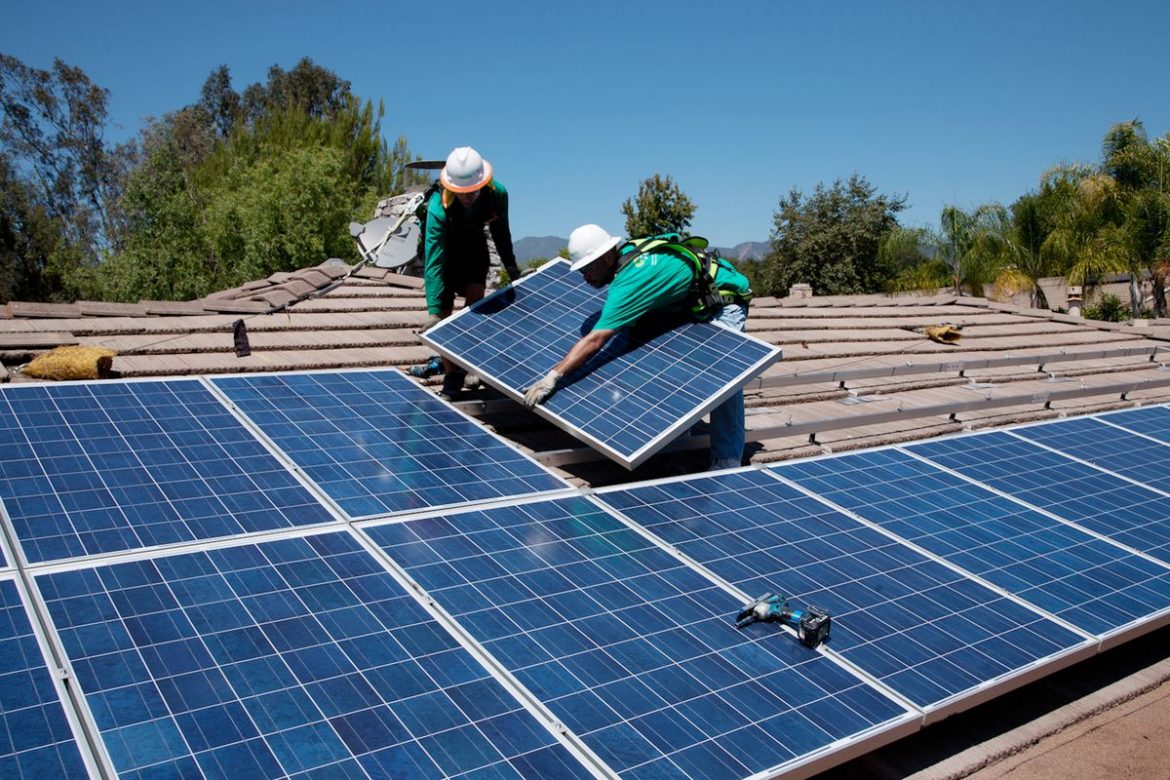So, you have just decided to go green with Solar energy for your share of environment care. And solar rooftops system was your obvious choice, be it a residential or a commercial building. You are all decked up to call an expert on the solar rooftop system.
But pause for a few minutes and bear with me to understand that even if it’s your known dealer, a few things will always be kept undisclosed because of many Terms and Conditions that companies apply. Before diving, let us first understand the scenarios and the models available in the market.
The first model is an ON-grid system in which the rooftop solar systems is connected to the grid. An inverter is present to convert DC power (generated by Solar panels) to AC power to power the loads (AC/fridge/fan etc).
The first model is an: On-grid system. It has 5 scenarios.
1. Solar Generated = Required Load
(Solar power runs the loads completely. Although the Grid is available and the power from solar is sufficient).
2. Solar Generated > Required Load
(Solar power will support the existing loads first, and then export the excess power to the grid)
3. Solar Generated < Required Load
(Herein, load completely consumes the solar power. The rest of the power required by the load is compensated by the Grid)
4. Solar Generated = O
(At night-time, no generation of solar power. Herein, the load imports the power from the grid.)
5. No Grid is available.
(During a power cut, the solar inverter shuts down to keep the people fixing the grid safe).
The second model is an Off-Grid. This model replaces the grid in its entirety. Rather a battery is used which acts as a bank to store the excess power generated during the daytime. During less generation or no generation of solar power, in place of the grid, the battery sends its power to the loads.
The third model is a Hybrid system wherein, both On-grid and Off-grid systems work in tandem. This model is advantageous in two ways: one, you do not need the grid. And two, when the battery becomes full, the excess power is sent to the grid.
Now the real deals are:
1. The Tale of Two Metering
In 1st and 3rd variants where the use of a grid is present, the possibility to generate revenue from the excess power is the exact area to focus on. Usually, the customers or the users give in to the temptation of getting paid by the power companies, once the users start generating excess power. Well, it just happens that nothing can be further from the truth. Let us see how.
There are Gross Metering Systems and Net Metering systems. The GMS system provides a pre-determined “Feed-in-tariff‘ for the power generated through solar. The generated solar power is completely exported in the grid. From the grid, the household loads are operated.
Unless you get a competitive ‘Fee-in-tariff’, better to opt for the Net Metering. Net metering, on the other hand, is what you use. Meaning that the solar power generated is first supplied to a home or business electricity needs. The power left after load consumption is exported to the grid and electricity retailers then pay you.
2. Reducing Efficacy
In general, all the companies try to convince customers and users that solar panels do not need much maintenance. This is true marginally. Weather conditions reduce the efficacy of panels each year by 1 percent. By the end of the 15-20 years, a significant reduction occurs in the panel’s efficiency.
Maintaining the panels in harsh weather is good for health maintenance. Talking to the dealers and experts to manage the efficiency of equipment over a period of time can be a good decision.
3. The Dilemma of Leasing
Lastly, due to the high rewards of exporting power to DISCOMs, the system of leasing roofs are catching up. But be aware that it has its consequences too.
Roof lease can hurt the valuation of your property. Installing a solar system in either residential or commercial places is a long-term (usually 20-30 years) investment and responsibility. It is crucial to consider your living tenure. If not, buyers of such properties usually shy away and you can lose your real value of the property.
People are usually duped into solar leases, by costly installations to several lease terms. Leasing is a cheaper option with little or no money to buy, but when you lease, the company in the contract which owns the system might take away the system once your lease term ends.
Make sure, you weigh the terms and cost between the total lifecycle cost of the lease and the benefits you would reap from ownership.
Related Read: How to Choose the Best Solar PV Installer


A round of applause for your blog. Really looking forward to read more. Much obliged. Nana Lewes Verdie